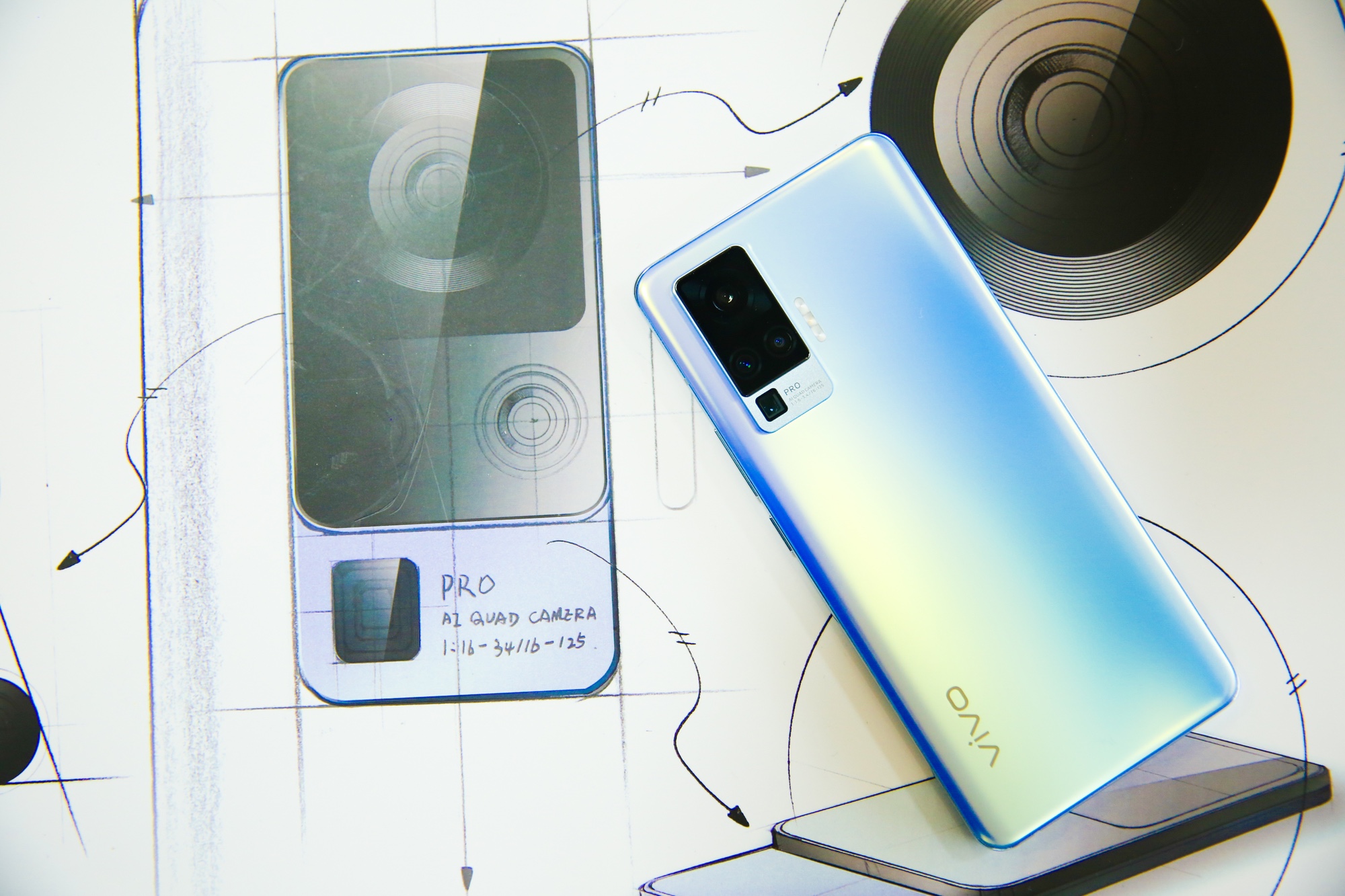Samsung Galaxy Note 20 should steal this feature from the Vivo X50 Pro
The Vivo X50 Pro's main camera features a built-in gimbal for more stable photos

Chinese phone maker Vivo has rolled out its X50 series, featuring a trio of flagship phones. And while the Vivo X50, X50 Pro and X50 Pro+ will likely never reach the US — at least not officially — there's some camera technology in the new models that we hope other phone makers are quick to adopt.
Specifically, the Vivo X50 Pro boasts a built-in gimbal module that the phone maker says is modeled after a full-size professional gimbal. That feature should allow X50 Pro users to snap clear photos free of blur, even when they're in motion and capturing photos at night.
- Best camera phones
- iPhone 12 leak shows all four models for first time
- Plus: Motorola Razr 2: Release date, specs, price and news
According to Vivo, the gimbal on the X50 Pro moves in the opposite direction of any shaking motions while you're holding the phone. That boosts stability when you're taking photos. Additionally, Vivo's gimbal system features a wider rotation angle and anti-shake area than the optical image stabilization technologies used in other phones. Bottom line: expect clear photos from the Vivo X50 Pro, even if you're moving about.
We haven't been able to verify this for ourselves, but it sounds as if Vivo's designed a very user-friendly system to take advantage of this feature. The phone will display an on-screen animated ball — Vivo's dubbed this the Gimbal Radar — that will let you know when your picture frame is stable to maximize the odds of you producing a clear shot.
This isn't the first time Vivo has touted a gimbal feature in one of its phones. Back in February, Vivo showed off the Vivo Apex 2020, which also featured a built-in gimbal. That phone, though, was more of a concept design, whereas the X50 will actually see production. And that increases the chances other phone makers might be able to replicate the feature in their own handsets.
That's unlikely to happen in 2020, though, at least based on the rumors we've been hearing about other leading smartphones set to come out in the second half of this year. The Samsung Galaxy Note 20, for example, is expected to adopt the same camera modules introduced in the Galaxy S20 lineup earlier this year, though likely with a dedicated sensor to help with autofocus. As for the iPhone 12, the main camera focus appears to be adding a LiDAR sensor on the Pro models, which would improve portrait photos while also enabling augmented reality apps. Those will be welcome additions, but it doesn't sound like improved stabilization is necessarily in the cards.

It's worth paying attention to Vivo releases, as the phone maker has a habit of introducing new flourishes that eventually find their way into other handsets. Back in 2018, I saw a demo of a Vivo phone during CES where the company showed off the first in-display fingerprint sensor. These days, that's a pretty common sight on smartphones ranging from Samsung's Galaxy S20 to the OnePlus 8 Pro.
Sign up to get the BEST of Tom's Guide direct to your inbox.
Get instant access to breaking news, the hottest reviews, great deals and helpful tips.
While the gimbal on the Vivo X50 Pro is what caught our eye, it's not the only camera feature worth paying attention to. You'll find four rear cameras on the X50 Pro, led by a 48-megapixel Sony IMX598 sensor for the main lens. (The X50 Pro+, it's worth noting, swaps that Sony sensor for the 50-MP Samsung Isocell GN1, but loses the fancy gimbal.)
The cameras on all Vivo X50 variants perform well from a distance, thanks to a periscope lens design that can achieve 60x digital zoom. That's more than the 50x zoom the Huawei P40 Pro maxes out at, though short of the 100x zoom enabled by the Space Zoom lens on the Galaxy S20 Ultra.
The Vivo X50 Pro also features Super Night Mode and Astro Mode for better low-light pictures as well as Super Wide Angle and Super Macro features for pulling out and getting up close, respectively.
A Snapdragon 865 system-on-chip powers the X50 series, and the display features refresh rates of 90Hz and 120Hz — faster than the typical 60Hz refresh rates you see on most phones. Vivo is also touting the fact that the X50 is 7.49mm thin, which tops thin designs like the Galaxy S20 Plus (7.8mm) and the OnePlus 8 (8mm). The Galaxy Z Flip is thinner at 6.9mm to 7.2mm, but only when that foldable phone is opened up.
Even though the Vivo X50 series is unlikely to reach the US, there's a strong chance it will land in markets outside of China. In a release announcing the X50's launch, Vivo said these would be the first X series products to reach international markets, though the company didn't specify where or when.
Philip Michaels is a Managing Editor at Tom's Guide. He's been covering personal technology since 1999 and was in the building when Steve Jobs showed off the iPhone for the first time. He's been evaluating smartphones since that first iPhone debuted in 2007, and he's been following phone carriers and smartphone plans since 2015. He has strong opinions about Apple, the Oakland Athletics, old movies and proper butchery techniques. Follow him at @PhilipMichaels.

